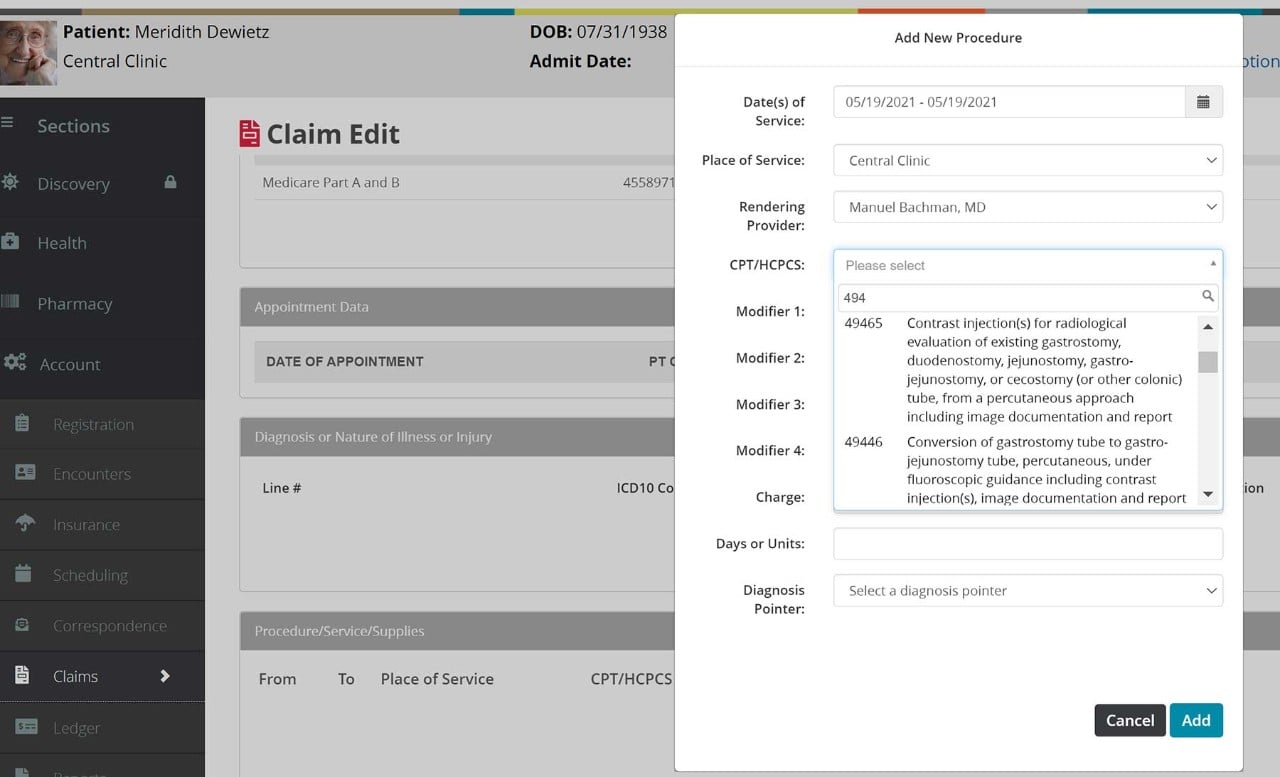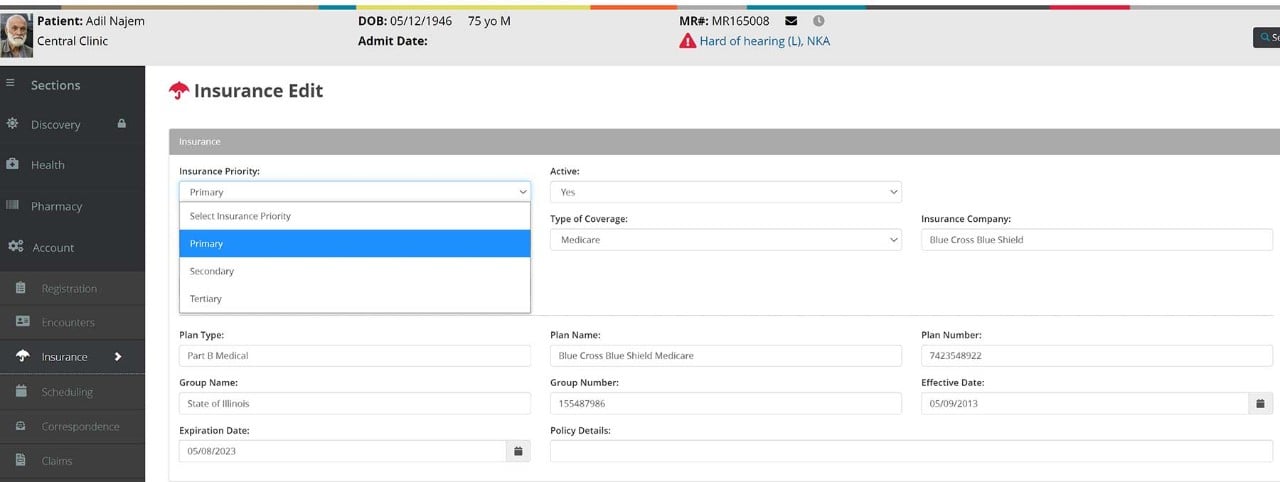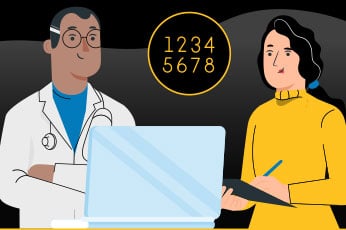By DeVry University
May 13, 2023
6 min read
Medical Billing and Coding
May 13, 2023
6 min read
Medical billing and coding are essential functions in the healthcare industry. Billers and coders are critical for maintaining the financial health and successful operation of any healthcare facility. They ensure that medical diagnoses and procedures are translated into the correct codes and submitted to payers so providers can get reimbursed in a timely manner. They also help patients understand their financial responsibilities and navigate claim processing in case of insurance denials.

Here is a deeper look at the functions of medical billing and coding, along with some medical billing and coding examples to show how billers and coders perform their day-to-day tasks.
Medical coding is the process of translating diagnoses, procedures and supply information from patient records into universal medical codes, which are used by billers to submit claims. Medical coders must be knowledgeable in medical terminology and anatomy to code procedures and diagnoses accurately. They should also understand billing practices and follow the appropriate guidelines so they can effectively collaborate with medical billers.

In this medical coding example, the coder receives a patient record on abscess drainage and needs to translate the information regarding the indications, medication and procedure into medical codes according to intervention radiology CPT codes.
First, she identifies the procedure performed, which is "CT guided retroperitoneal peripancreatic fluid collection drainage." Then, she reviews the indications to learn that the CT images show a mass that potentially represents an abscess. Next, she finds out that moderate sedation was used. Lastly, she learns that the surgeon aspirated purulent fluid, which was sent to the lab for evaluation.
The medical coder then translates all the steps involved in this procedure into medical codes using her knowledge in human physiology, medical terminology and the Current Procedural Terminology (CPT) coding process, which are skills you can gain from medical coding training. She uses the CPT codes 49405-59 to represent the various steps and supplies used in the image-guided fluid collection drainage process.

In this medical coding example, the coder receives a patient record for a cholecystostomy exam. To translate the details of this procedure into billing codes, he needs coding knowledge about ultrasound and fluoroscopic guidance in intervention radiology.
First, he identifies the procedure as "ultrasound-guided cholecystostomy drainage." Then, he reviews the indication to learn that the patient has cholecystitis. Next, he sees that moderate sedation was applied and monitored by ICU nurses. Lastly, he read the details of the procedure to learn the ultrasound-guided percutaneous cholecystostomy was performed successfully. A complete ultrasound was obtained for diagnostic paracentesis.
The medical coder then translates the complex procedure into billing codes using his knowledge in human physiology, medical terminology, CPT coding and the International Classification of Diseases (ICD) coding practices. He uses two CPT codes (47490 and 49083), two ICD codes (575.8 and 789.59) and two ICD-10 codes (K82.8 and R18.8) to represent the various steps and medications involved in this procedure.
Medical billing involves reviewing medical records, identifying diagnoses and procedures, submitting claims electronically to payers (e.g., insurance companies and/or government agencies) and billing patients for their responsibilities. Medical billers need to ensure that the patient information is secure and the healthcare providers get paid. They also act as liaisons between insurance companies and patients to handle insurance denials and claim re-processing.

In this medical coding example, the coder receives a patient record for a cholecystostomy exam. To translate the details of this procedure into billing codes, he needs coding knowledge about ultrasound and fluoroscopic guidance in intervention radiology.
First, he identifies the procedure as "ultrasound-guided cholecystostomy drainage." Then, he reviews the indication to learn that the patient has cholecystitis. Next, he sees that moderate sedation was applied and monitored by ICU nurses. Lastly, he read the details of the procedure to learn the ultrasound-guided percutaneous cholecystostomy was performed successfully. A complete ultrasound was obtained for diagnostic paracentesis.
The medical coder then translates the complex procedure into billing codes using his knowledge in human physiology, medical terminology, CPT coding and the International Classification of Diseases (ICD) coding practices. He uses two CPT codes (47490 and 49083), two ICD codes (575.8 and 789.59) and two ICD-10 codes (K82.8 and R18.8) to represent the various steps and medications involved in this procedure.

After a procedure is completed and a medical coder turns the patient records into medical codes, the revenue cycle shifts to the back-end medical billing process. It involves creating, issuing and managing claims until the healthcare provider is reimbursed.
In this back-end medical billing example, the medical coder first transfers the medical codes into the format required for billing, claims submissions and collection. Then, he applies the appropriate pricing to the medical codes assigned to each diagnosis, procedure and supply. He'll then submit the information to payers for reimbursement. He will also be responsible for managing denied or rejected claims and reconciling insurance payments with patient invoices to ensure that the full amount is covered.
To effectively navigate the complex healthcare system and ensure the security of patient data, medical billers must be knowledgeable in health services and information systems, health information processes, legal and regulatory issues in health information, as well as health insurance and reimbursement processes.
7 min read

September 28, 2021
Prepare for a career in medical billing and coding. Learn how to choose the best online medical billing and coding program for you with this guide from DeVry.
7 min read

September 8, 2021
Whether you’re new or experienced in medical billing and coding, learn about new medical billing and coding trends and changes in medical billing industry statistics.
7 min read

September 25, 2020
Considering a medical billing career or medical coding career? Learn about job tasks, processes & education with this medical billing & coding career infographic.
Filter Blog Post Category